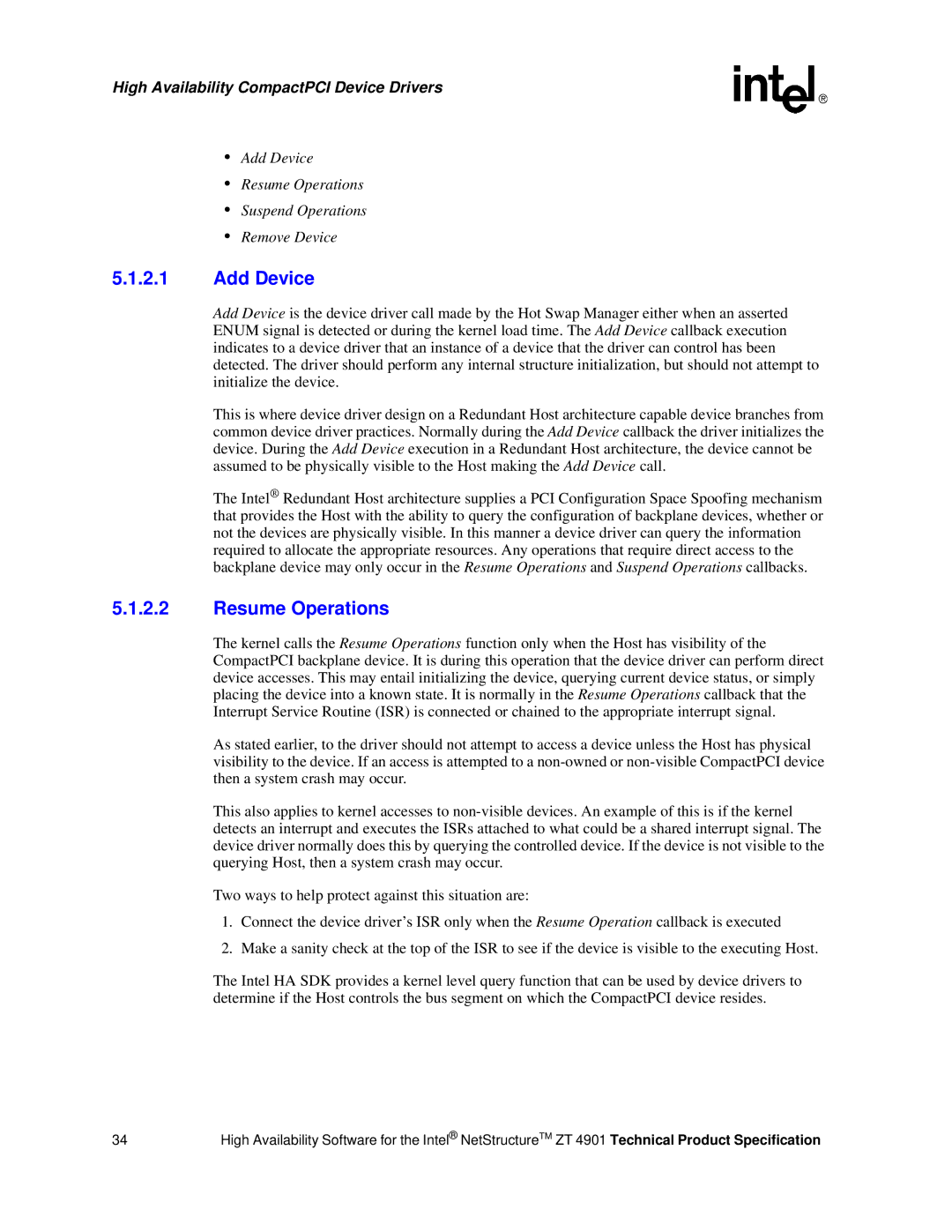High Availability CompactPCI Device Drivers
•Add Device
•Resume Operations
•Suspend Operations
•Remove Device
5.1.2.1Add Device
Add Device is the device driver call made by the Hot Swap Manager either when an asserted ENUM signal is detected or during the kernel load time. The Add Device callback execution indicates to a device driver that an instance of a device that the driver can control has been detected. The driver should perform any internal structure initialization, but should not attempt to initialize the device.
This is where device driver design on a Redundant Host architecture capable device branches from common device driver practices. Normally during the Add Device callback the driver initializes the device. During the Add Device execution in a Redundant Host architecture, the device cannot be assumed to be physically visible to the Host making the Add Device call.
The Intel® Redundant Host architecture supplies a PCI Configuration Space Spoofing mechanism that provides the Host with the ability to query the configuration of backplane devices, whether or not the devices are physically visible. In this manner a device driver can query the information required to allocate the appropriate resources. Any operations that require direct access to the backplane device may only occur in the Resume Operations and Suspend Operations callbacks.
5.1.2.2Resume Operations
The kernel calls the Resume Operations function only when the Host has visibility of the CompactPCI backplane device. It is during this operation that the device driver can perform direct device accesses. This may entail initializing the device, querying current device status, or simply placing the device into a known state. It is normally in the Resume Operations callback that the Interrupt Service Routine (ISR) is connected or chained to the appropriate interrupt signal.
As stated earlier, to the driver should not attempt to access a device unless the Host has physical visibility to the device. If an access is attempted to a
This also applies to kernel accesses to
Two ways to help protect against this situation are:
1.Connect the device driver’s ISR only when the Resume Operation callback is executed
2.Make a sanity check at the top of the ISR to see if the device is visible to the executing Host.
The Intel HA SDK provides a kernel level query function that can be used by device drivers to determine if the Host controls the bus segment on which the CompactPCI device resides.
34 | High Availability Software for the Intel® NetStructureTM ZT 4901 Technical Product Specification |
